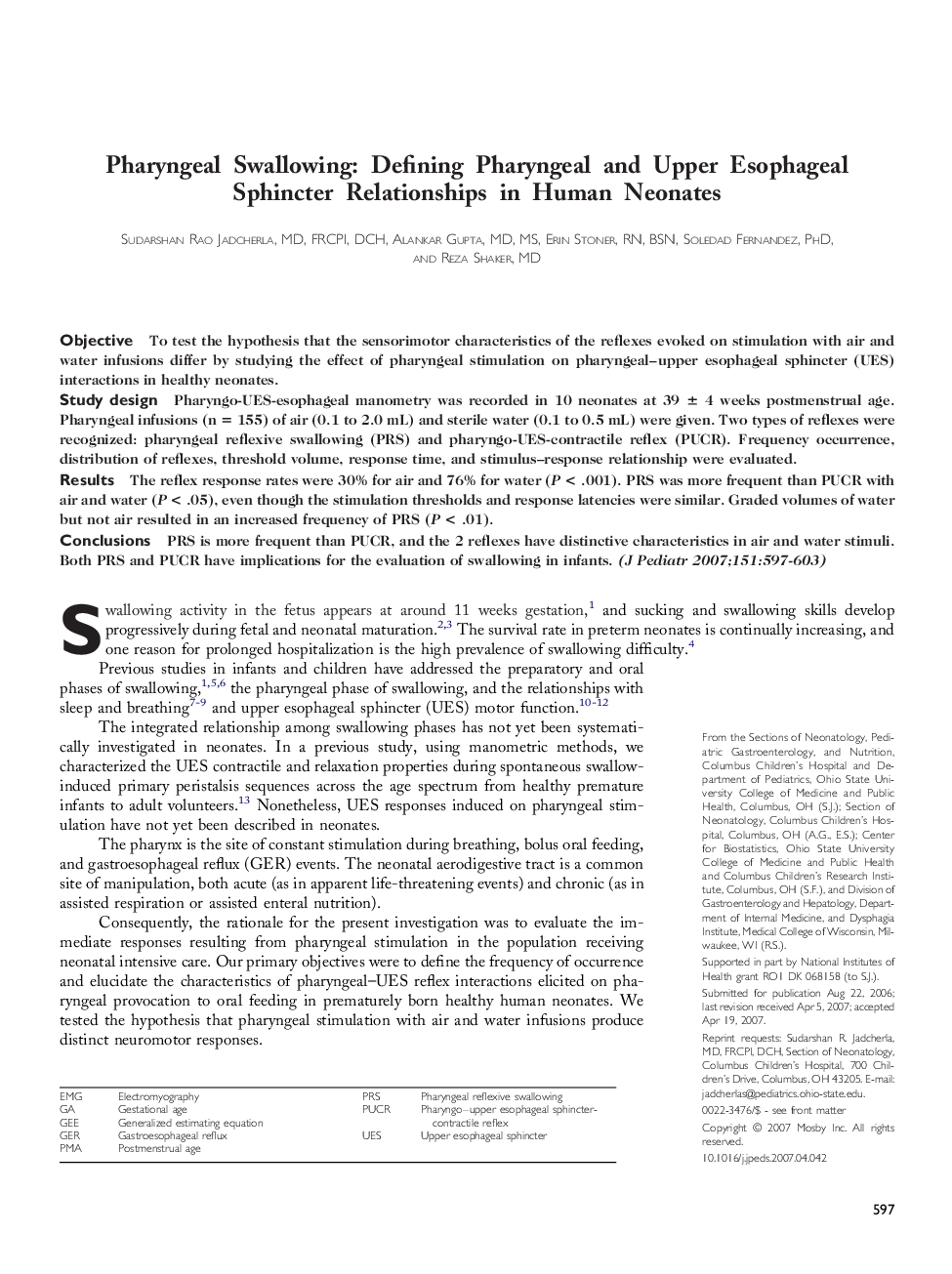| کد مقاله | کد نشریه | سال انتشار | مقاله انگلیسی | نسخه تمام متن |
|---|---|---|---|---|
| 4167575 | 1607541 | 2007 | 7 صفحه PDF | دانلود رایگان |

ObjectiveTo test the hypothesis that the sensorimotor characteristics of the reflexes evoked on stimulation with air and water infusions differ by studying the effect of pharyngeal stimulation on pharyngeal–upper esophageal sphincter (UES) interactions in healthy neonates.Study designPharyngo-UES-esophageal manometry was recorded in 10 neonates at 39 ± 4 weeks postmenstrual age. Pharyngeal infusions (n = 155) of air (0.1 to 2.0 mL) and sterile water (0.1 to 0.5 mL) were given. Two types of reflexes were recognized: pharyngeal reflexive swallowing (PRS) and pharyngo-UES-contractile reflex (PUCR). Frequency occurrence, distribution of reflexes, threshold volume, response time, and stimulus–response relationship were evaluated.ResultsThe reflex response rates were 30% for air and 76% for water (P < .001). PRS was more frequent than PUCR with air and water (P < .05), even though the stimulation thresholds and response latencies were similar. Graded volumes of water but not air resulted in an increased frequency of PRS (P < .01).ConclusionsPRS is more frequent than PUCR, and the 2 reflexes have distinctive characteristics in air and water stimuli. Both PRS and PUCR have implications for the evaluation of swallowing in infants.
Journal: The Journal of Pediatrics - Volume 151, Issue 6, December 2007, Pages 597–603